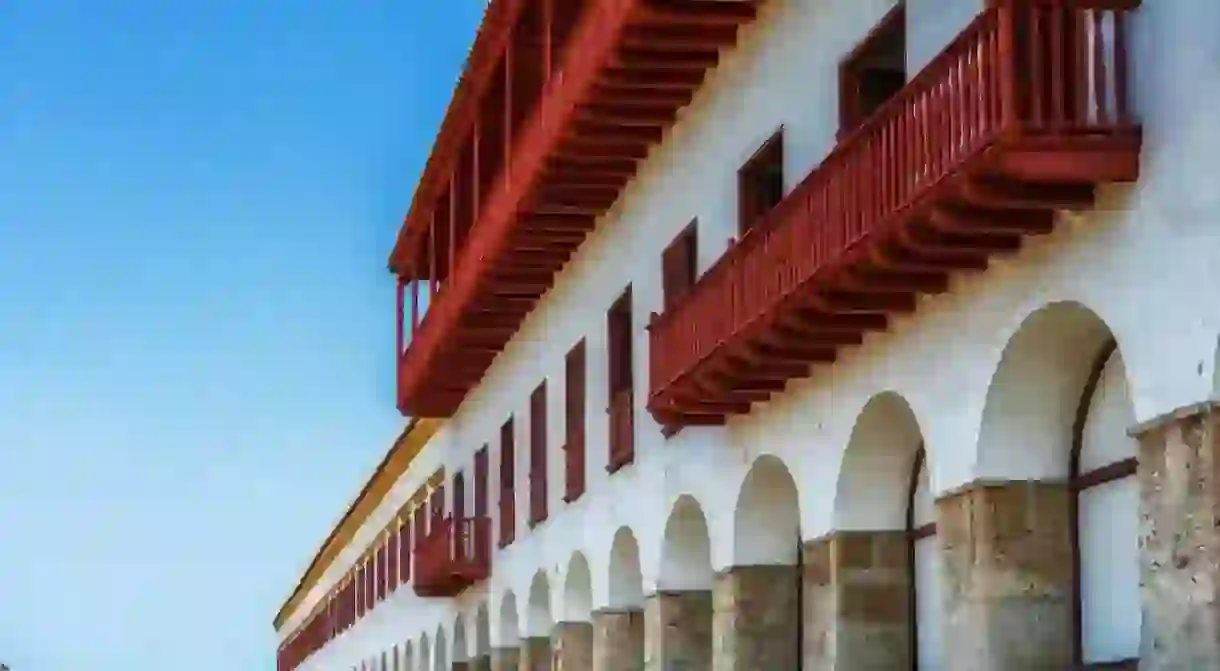The Best Museums in Cartagena

Cartagena, on Colombia’s Caribbean coast, is home to beautiful Spanish-style architecture. The city played a big part in the history of South America, protecting Colombia from invasion. Cartagena’s history has been preserved within its architecture, and many of its historic buildings are now museums, which teach visitors about the local indigenous communities and a whole host of precious artefacts.
Zenú Gold Museum
Library, Museum

The Zenú Gold Museum is located within a colonial mansion in Plaza de Bolivar. The museum houses a large number of gold artefacts such as figurines and jewelry collected from around the country. The museum teaches visitors about the gold’s history, its history within the city, and its origins. Visitors are taken on a journey through time, exploring the history of indigenous communities within Cartagena and other parts of the country. The museum also contains gold brought to the country by pirates and explorers who arrived in the city centuries ago in search of riches.
Emerald Museum
Museum
The Emerald Museum is located in a colonial house, and contains large varieties of different colored emeralds and other gem stones that were discovered all over the country. Emeralds can be found – and were previously mined – all over Colombia, and the museum allows visitors to experience and learn about the history of emeralds in the country, as well as information about the seven mines that still operate in the country. The museum contains a variety of exhibitions about the gems and how they are used today.
Museo de Art Moderno
Museum
The Museum of Modern Art is located within an old customs house in Plaza San Pedro Claver. The museum contains pieces from a variety of artists from around the world, as well as special exhibitions and collections. Opened in 1959, this museum has a large collection of pieces from Colombian artist Darío Morales. The museum houses temporary and permanent pieces, many of which are Caribbean influenced.
Pedro Claver's House
Cathedral, Church

Pedro Claver was a Spanish priest and missionary who volunteered to be sent to the Spanish colonies. Sent to Cartagena in 1610, Claver continued his humanitarian work in the city. At the time, African slaves were beginning to arrive here before being transported on to the Americas. Claver spent the rest of his life in Cartagena, where he became a patron saint of slaves, as he provided aid and treated many Africans who arrived in the city. His previous home in Cartagena has been preserved in its original form and is now open as a museum. The museum pays tribute to Claver’s life within a beautiful house and garden setting.
Naval Museum
Museum
Cartagena’s Naval museum, or the Museo Naval del Caribe, is an interactive museum that showcases the city’s naval history. Located in an old school house, the museum is situated across two floors, and utilizes the courtyard garden area to showcase cannons and artefacts discovered on ships within the harbor. In addition to the city’s history, the museum’s second floor showcases current Colombian naval and army bases. Outside the naval museum, in a park across the street, is a monument to significant figures in Cartagena and Colombia’s history, along with a monument to the Colombian soldiers who died in the Vietnam War.
Palace of Inquisition
Building, Museum
The Inquisition Museum is located in a Spanish colonial building beside Plaza de Bolivar. The palace explains the history of Spanish torture methods, with the museum itself located in a building which was once where death row criminals were incarcerated. The colonial house has a torture dungeon and division which was used in the 16th century, along with various objects preserved from the period. The museum’s second floor is home to the History Museum of Cartagena, which teaches visitors about Cartagena’s indigenous culture, traditions, and offers a glimpse into what life was like in the city at that time.













